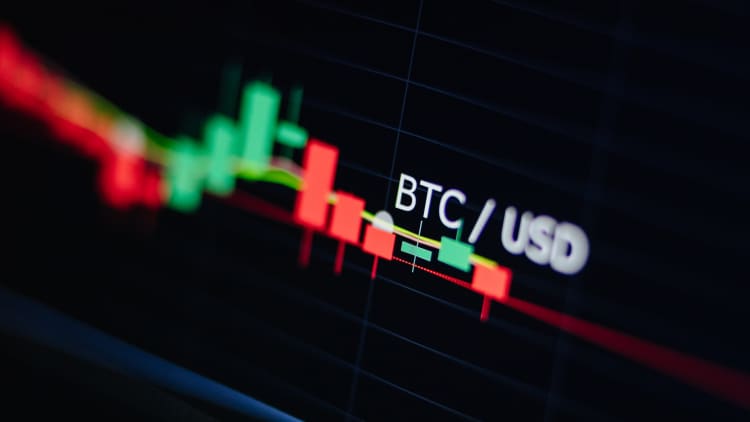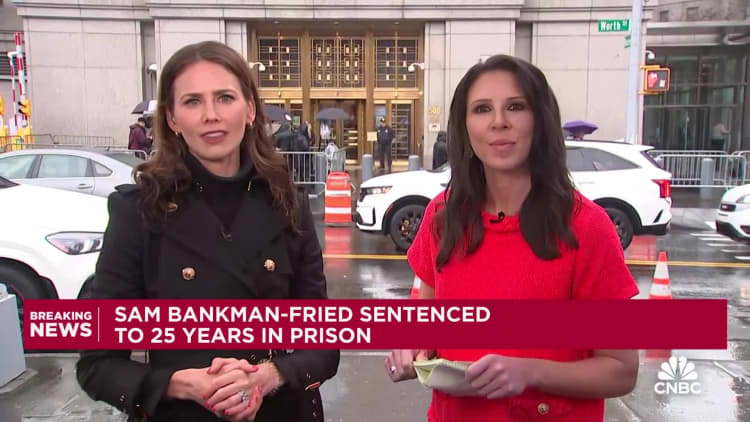Omer Taha Cetin | Anadolu | Getty Images
A bitcoin exchange that collapsed 10 years ago after being hacked is set to return billions of dollars’ worth of the token to users — and it has investors worried.
In a few days, bankrupt Tokyo-based bitcoin exchange Mt. Gox will begin paying back thousands of users almost $9 billion worth of tokens. The platform went under in 2014 following a series of heists that cost it in the range of 650,000 to 950,000 bitcoin, or upward of $58 billion, at current prices.
The payout follows a protracted bankruptcy process that’s involved multiple delays and legal challenges.
On Monday, the court-appointed trustee overseeing the exchange’s bankruptcy proceedings said distributions to the firm’s roughly 20,000 creditors would begin in early July. Disbursements will be in a mix of bitcoin and bitcoin cash, an early offshoot of the original cryptocurrency.
While this is good news for victims of the hack who have spent years waiting to be made whole, the price of bitcoin slid to $59,000 last week, in the crypto market’s second-worst weekly decline of the year.
CNBC spoke to half a dozen analysts to get their take on what to expect when roughly 141,000 bitcoins — or roughly 0.7% of the total 19.7 million bitcoins outstanding — are returned to Mt. Gox victims this week.
Pressure on bitcoin could pick up
Mt. Gox — short for “Magic: The Gathering Online Exchange” — was once the largest spot bitcoin exchange globally, claiming to handle around 80% of all global dollar trades for bitcoin.
When it shuttered in February 2014, bitcoin was worth around $600.
Today, the world’s largest cryptocurrency is trading at about $61,000 per coin. That means users opting to be reimbursed in kind — that is, in the cryptocurrency itself, rather than the cash equivalent — have seen the value of their coins surge more than 10,000% in the last decade.
John Glover, chief investment officer of crypto lending firm Ledn, told CNBC the windfall for Mt. Gox users would likely translate to huge sales in bitcoin as investors look to lock in gains.
“Many will clearly cash out and enjoy the fact that having their assets stuck in the Mt. Gox bankruptcy was the best investment they ever made,” said Glover, who was previously a managing director at Barclays. “Some will clearly choose to take the money and run,” added Glover.
James Butterfill, head of research at CoinShares, told CNBC the overhang of the nearly $9 billion of bitcoin set to be released has “long been a concern for those with bullish views on bitcoin.”
“Consequently, the market is highly sensitive to any related news. With the announcement that the Trust will begin selling in July, investors are understandably worried,” said Butterfill.
It wouldn’t be the first time bitcoin’s moved in reaction to big redemptions of funds locked up in centralized trading platforms.
Last month, crypto exchange Gemini returned more than $2 billion worth of bitcoin to users with funds that had been trapped in its Earn lending program, marking a 230% recovery after bitcoin prices more than tripled since Gemini suspended Earn withdrawals on Nov. 16.
JPMorgan analysts linked this to negative price action, saying in a research note last week that it’s “fair to assume that some of Gemini creditors, which are mostly retail customers, have taken at least partial profits in recent weeks.”
Similarly, JPMorgan analysts expect Mt. Gox customers to be similarly inclined to sell some of their bitcoin to profit from seismic gains for the cryptocurrency.
“Assuming most of the liquidations by Mt. Gox creditors take place in July, [this] creates a trajectory where crypto prices come under further pressure in July, but start rebounding from August onwards,” they wrote.
Separately last month, the German government sold 5,000 — worth approximately $305.8 million as of Thursday’s prices — of a 50,000-bitcoin pile seized in connection with the movie piracy operation Movi2k.
The funds were sent to various crypto exchanges, including Coinbase, Kraken, and Bitstamp, according to blockchain intelligence firm Arkham Intelligence.
Analysts say these crypto liquidations, too, have placed pressure on bitcoin’s price.

Mt. Gox customers expected to hang on to their bitcoin
Most analysts agree losses in bitcoin are likely to be contained and short-lived.
“I think that sell-off concerns relating to Mt. Gox will likely be short-term,” said Lennix Lai, chief commercial officer of crypto exchange OKX.
“Many of Mt. Gox’s early users as well as creditors are long-term bitcoin enthusiasts who are less likely to sell all of their bitcoin immediately,” he said, adding previous sell-offs by law enforcement, including the Silk Road case, did not result in a sustained catastrophic price drop.
Butterfill suggested there’s enough market liquidity to cushion the blow of any possible mass market sell action.
“Bitcoin has maintained a daily trading volume of $8.74 billion on trusted exchanges this year, suggesting that liquidity is sufficient to absorb these sales over the summer months,” said Butterfill.
According to CCData research analyst, Jacob Joseph, the markets are more than capable of absorbing the selling pressure.
“Moreover, a healthy part of the creditors are likely to take a 10% haircut on their holdings to receive the repayment early, and not all holdings are set to be liquidated on the open market, reducing the overall selling pressure,” he said.

Recent price moves suggest the temporary impact of the Mt. Gox repayments may already be priced in, Joseph added.
Galaxy Digital’s head of research, Alex Thorn, believes fewer coins will be distributed than people think, meaning there will be less sell pressure than the market expects.
However, he also wrote in May that, even if only 10% of the bitcoin distributed is sold, “it will have a market impact.”
“Most of the individual creditors will have their coins deposited directly into a trading account at an exchange, making it extremely easy to sell,” Thorn said.
Vijay Ayyar, head of consumer growth for Asia-Pacific at crypto exchange Gemini, said that the overall impact of the Mt. Gox disbursement is likely to be “dissipated,” given the recipients of the funds are varied.
On the one hand, there are individual holders who will get their bitcoin straight away. Then there’s the “significant amount” of bitcoin that will be disbursed out to claims funds, Ayyar said.
“Those funds would then need to distribute these out to their LPs [limited partners], hence the whole process could take a while adding a time element to the impact on price,” he told CNBC.
Macro headwinds behind bitcoin’s fall
It’s worth noting there are plenty of other reasons behind bitcoin’s recent declines.
The cryptocurrency had a stunning rally earlier this year, climbing past $70,000 on the heels of the U.S. Securities and Exchange Commission’s approval of the first spot bitcoin ETF.

Bitcoin’s U.S. dollar price performance, year-to-date.
But investors have remained anxious amid outflows from bitcoin ETFs and sizable market liquidations. The broader macro environment, too, has investors worried.
Earlier this month, the Federal Reserve suggested it plans to cut rates just once this year, down from the multiple cuts it had indicated previously.
Cryptocurrencies, which are inherently volatile, are particularly sensitive to changes in the interest rate environment.
CoinShares’ Butterfill said the Fed’s new rate forecast was among “the likely culprits for the recent price decline” in bitcoin.
This, along with other issues, is “likely to weigh on prices in the lower volume summer months,” Butterfill said. However, “the fundamental investment case remains very much intact,” he added.
Credit: Source link















